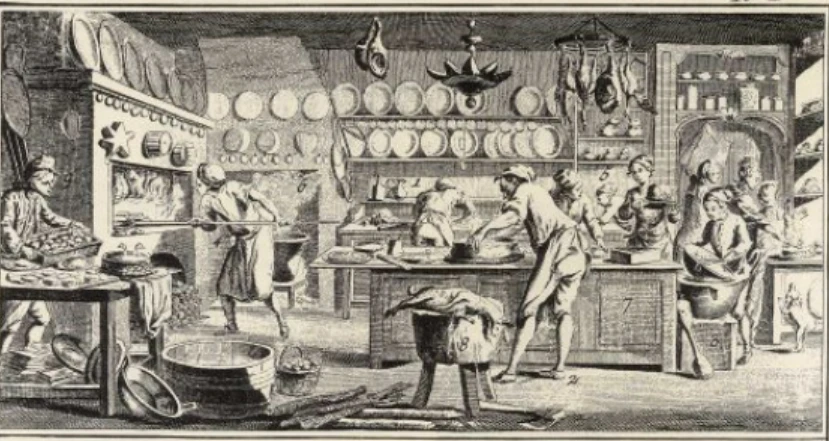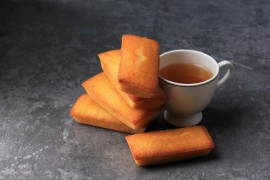A brief history of flan
We don't really know who invented the flan. It has to be said that the mixture of egg and sugar with a little cream is as old as the hills, and can be found in many countries around the world, such as China or Portugalwith the famous pateis de nata. In France, a flan is a kind of tart with a thin pastry crust, filled with a delicious mixture of egg, cream, vanilla and sugar.
An 18th-century pastry chef's workshop as seen in Diderot and d'Alembert's Encyclopédie. Image chosen by monsieurdefrance.com: BNF / Gallica.fr
We find traces of it at the coronation of King Henri IV (1553-1610), but in the Middle Ages, "Flaon" was already being served at Parisian fairs, probably in the form of galettes topped with a mixture of egg and honey (vanilla didn't arrive in France until the 18th century). It is also sometimes salted, with mushrooms or pieces of poultry. In the 19th century, Antonin Carême, the famous chef, spoke of "Parisian flan", and in 1846, a culinary guide mentions "flan de crème". Until quite recently, flavored flans were made in Reims, with raisins for example.
How do I make my grandmother's flan?
If you can plan ahead, put your dough on the plate in the fridge the day before. It will hold better. Otherwise, put it in the freezer for 10 minutes.
The ingredients
Serves 8 :
- 1 piece shortcrust pastry
- 1 vanilla pod
- 1 half teaspoon vanilla essence
- 0.75 liter whole milk (no low-fat milk!)
- 25 Cl crème fraîche (same as whole cream).
- 10 grams butter
- 4 whole eggs + 1 yolk
- 90 grams cornstarch (Maïzena)
- 150 grams white sugar.
A good flan. Photo chosen by monsieurdefrance.com: VadimVasenim via depositphotos.
The process
1
First, butter your mold and then pucker your dough. Prick the bottom with a fork and chill. It's best to do this a few hours before preparing the rest.
Preheat oven to 230°C (gas mark 8)
2
In a bowl, mix together the sugar and cornflour (remember to sift it a little to avoid lumps). Split the vanilla pod in half crosswise.
3
Heat the milk and cream in a saucepan, adding the vanilla pod. The milk should be boiling and simmering, but it's best to avoid boiling.
4
Beat your eggs and add to the sugar and cornflour mixture.
5
Remove the vanilla pod and pour the boiling milk over the previous mixture. Whisk gently, so that it doesn't foam. Keep on the heat for 1-2 minutes. For this to be perfect, the contents must be at 80°C.
6
Remove your dish from the fridge and pour the mixture (in Lorraine we call it "la migaine") over the dough. Spread well.
7
Place the dish in the oven, which has been preheated to 230°C and then lowered to 200°C (Thermostat 6/7), and cook for 30 to 40 minutes. To check whether your flan is cooked, press the tip of a knife into it. If the mixture sticks to the knife, it's not cooked.
Tips for a successful flan
Chill the dough for a few hours before making your flan. It will hold better. Either refrigerate the day before, or freeze for 10 minutes before you start.
When you bake your flan, set the oven to static heat and place the dish at the bottom, so that the pastry is cooked through.
Remember to chill your flan when it's ready if you don't want to eat it straight away. It doesn't keep well. Remember to take it out of the fridge half an hour before eating. If it's too cold, you'll lose flavor.









